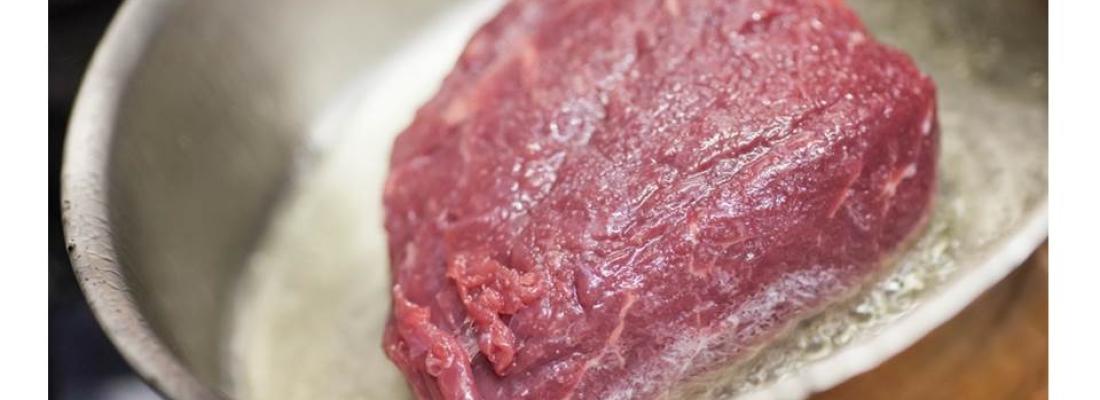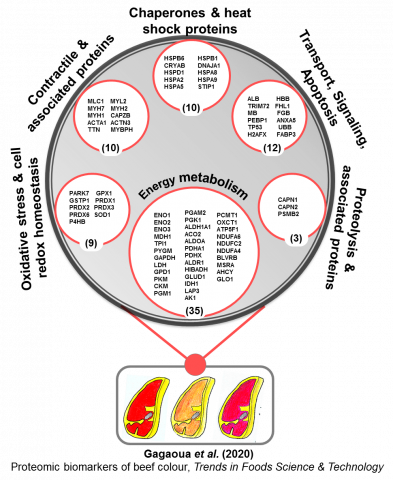Food, Global Health Reading time 2 min
Proteomic biomarkers of beef colour
Published on 01 October 2020

Until recently, there have been no detailed or critical studies on the role of protein biomarkers in determining meat colour. This review presents an integromics of recent muscle proteomic studies to investigate pathways and mechanisms of beef colour. A database was created from 13 independent proteomic-based studies including data on five muscles and a list of 79 proteins which were significantly correlated with colour traits. The database was subjected to a multistep analysis including Gene Ontology annotations, pathway analysis and literature mining. This report discusses the key protein biomarkers and the biological pathways associated with fresh beef colour. Biomarkers were prioritised by the frequency of identification and the need for future validation experiments is discussed.
This review identifies six pathways involved in beef colour including energy metabolism, heat shock and oxidative stress, myofibril structure, signalling, proteolysis and apoptosis. The datamining of the list of the putative biomarkers showed that certain proteins, such as β-enolase (ENO3), Peroxiredoxin 6 (PRDX6), HSP27 (HSPB1), Phosphoglucomutase 1 (PGM1), Superoxide Dismutase [Cu-Zn] (SOD1) and μ-calpain (CAPN1) were consistently reported by multiple studies as being differentially expressed and having a significant role in beef colour. This integromics work proposes a list of 27 putative biomarkers of beef colour for validation using adapted high-throughput methods.

Gagaoua, M.; Hughes, J.; Terlouw, E.M.C.; Warner, R.D.; Purslow, P.P.; Lorenzo, J.M.; Picard, B., 2020. Proteomic biomarkers of beef colour. Trends in Food Science & Technology, 101: 234-252. http://dx.doi.org/10.1016/j.tifs.2020.05.005
